First Air B732 near Resolute Bay on Aug 20th 2011, impacted terrain
The Canadian TSB released their final report concluding the causes of the crash were:
Findings as to causes and contributing factors
1. The late initiation and subsequent management of the descent resulted in the aircraft turning onto final approach 600 feet above the glideslope, increasing the crew’s workload and reducing their capacity to assess and resolve the navigational issues during the remainder of the approach.
2. When the heading reference from the compass systems was set during initial descent, there was an error of −8°. For undetermined reasons, further compass drift during the arrival and approach resulted in compass errors of at least −17° on final approach.
3. As the aircraft rolled out of the turn onto final approach to the right of the localizer, the captain likely made a control wheel roll input that caused the autopilot to revert from VOR/LOC capture to MAN and HDG HOLD mode. The mode change was not detected by the crew.
4. On rolling out of the turn, the captain’s horizontal situation indicator displayed a heading of 330°, providing a perceived initial intercept angle of 17° to the inbound localizer track of 347°. However, due to the compass error, the aircraft’s true heading was 346°. With 3° of wind drift to the right, the aircraft diverged further right of the localizer.
5. The crew’s workload increased as they attempted to understand and resolve the ambiguity of the track divergence, which was incongruent with the perceived intercept angle and expected results.
6. Undetected by the pilots, the flight directors likely reverted to AUTO APP intercept mode as the aircraft passed through 2.5° right of the localizer, providing roll guidance to the selected heading (wings-level command) rather than to the localizer (left-turn command).
7. A divergence in mental models degraded the crew’s ability to resolve the navigational issues. The wings-level command on the flight director likely assured the captain that the intercept angle was sufficient to return the aircraft to the selected course; however, the first officer likely put more weight on the positional information of the track bar and GPS.
8. The crew’s attention was devoted to solving the navigational problem, which delayed the configuration of the aircraft for landing. This problem solving was an additional task, not normally associated with this critical phase of flight, which escalated the workload.
9. The first officer indicated to the captain that they had full localizer deflection. In the absence of standard phraseology applicable to his current situation, he had to improvise the go-around suggestion. Although full deflection is an undesired aircraft state requiring a go-around, the captain continued the approach.
10. The crew did not maintain a shared situational awareness. As the approach continued, the pilots did not effectively communicate their respective perception, understanding, and future projection of the aircraft state.
11. Although the company had a policy that required an immediate go-around in the event that an approach was unstable below 1000 feet above field elevation, no go-around was initiated. This policy had not been operationalized with any procedural guidance in the standard operating procedures.
12. The captain did not interpret the first officer’s statement of “3 mile and not configged” as guidance to initiate a go-around. The captain continued the approach and called for additional steps to configure the aircraft.
13. The first officer was task-saturated, and he thus had less time and cognitive capacity to develop and execute a communication strategy that would result in the captain changing his course of action.
14. Due to attentional narrowing and task saturation, the captain likely did not have a high-level overview of the situation. This lack of overview compromised his ability to identify and manage risk.
15. The crew initiated a go-around after the ground proximity warning system “sink rate” alert occurred, but there was insufficient altitude and time to execute the manoeuvre and avoid collision with terrain.
16. The first officer made many attempts to communicate his concerns and suggest a go-around. Outside of the two-communication rule, there was no guidance provided to address a situation in which the pilot flying is responsive but is not changing an unsafe course of action. In the absence of clear policies or procedures allowing a first officer to escalate from an advisory role to taking control, this first officer likely felt inhibited from doing so.
17. The crew’s crew resource management was ineffective. First Air’s initial and recurrent crew resource management training did not provide the crew with sufficient practical strategies to assist with decision making and problem solving, communication, and workload management.
18. Standard operating procedure adaptations on FAB6560 resulted in ineffective crew communication, escalated workload leading to task saturation, and breakdown in shared situational awareness. First Air’s supervisory activities did not detect the standard operating procedure adaptations within the Yellowknife B737 crew base.
Findings as to risk
1. If standard operating procedures do not include specific guidance regarding where and how the transition from en route to final approach navigation occurs, pilots will adopt non-standard practices, which may introduce a hazard to safe completion of the approach.
2. Adaptations of standard operating procedures can impair shared situational awareness and crew resource management effectiveness.
3. Without policies and procedures clearly authorizing escalation of intervention to the point of taking aircraft control, some first officers may feel inhibited from doing so.
4. If hazardous situations are not reported, they are unlikely to be identified or investigated by a company’s safety management system; consequently, corrective action may not be taken.
5. Current Transport Canada crew resource management training standards and guidance material have not been updated to reflect advances in crew resource management training, and there is no requirement for accreditation of crew resource management facilitators/instructors in Canada. This situation increases the risk that flight crews will not receive effective crew resource management training.
6. If initial crew resource management training does not develop effective crew resource management skills, and if there is inadequate reinforcement of these skills during recurrent training, flight crews may not adequately manage risk on the flight deck.
7. If operators do not take steps to ensure that flight crews routinely apply effective crew resource management practices during flight operations, risk to aviation safety will persist.
8. Transport Canada’s flight data recorder maintenance guidance (CAR Standard 625, Appendix C) does not refer to the current flight recorder maintenance specification, and therefore provides insufficient guidance to ensure the serviceability of flight data recorders. This insufficiency increases the risk that information needed to identify and communicate safety deficiencies will not be available.
9. If aircraft are not equipped with newer-generation terrain awareness and warning systems, there is a risk that a warning will not alert crews in time to avoid terrain.
10. If air carriers do not monitor flight data to identify and correct problems, there is a risk that adaptations of standard operating procedures will not be detected.
11. Unless further action is taken to reduce the incidence of unstable approaches that continue to a landing, the risk of controlled flight into terrain and of approach and landing accidents will persist.
Other findings
1. It is likely that both pilots switched from GPS to VHF NAV during the final portion of the in-range check before the turn at MUSAT.
2. The flight crew of FAB6560 were not navigating using the YRB VOR or intentionally tracking toward the VOR.
3. There was no interference with the normal functionality of the instrument landing system for Runway 35T at CYRB.
4. Neither the military tower nor the military terminal controller at CYRB had sufficient valid information available to cause them to issue a position advisory to FAB6560.
5. The temporary Class D control zone established by the military at CYRB was operating without any capability to provide instrument flight rules separation.
6. The delay in notification of the joint rescue coordination centre did not delay the emergency response to the crash site.
7. The NOTAMs issued concerning the establishment of the military terminal control area did not succeed in communicating the information needed by the airspace users.
8. The ceiling at the airport at the time of the accident could not be determined. The visibility at the airport at the time of the accident likely did not decrease below approach minimums at any time during the arrival of FAB6560. The cloud layer at the crash site was surface-based less than 200 feet above the airport elevation.
The TSB reported the captain (ATPL, 12,900 hours total, 5,200 hours on type) was pilot flying, the first officer (ATPL, 4,848 hours total, 103 hours on type) was pilot monitoring.
While approaching the top of descent enroute at FL310 the crew programmed their GPS to track directly to waypoint MUSAT for an RNAV 35 true approach to Resolute Bay. The crew was planning to transition to an ILS/DME runway 35T approach via waypoint MUSAT.
After contacting Resolute Bay Tower the crew was instructed to report 10nm final for runway 35T, the runway was "a little wet", no aircraft had used it since the morning.
7 minutes later the crew commenced a left turn just before reaching MUSAT in order to align with the localizer. The aircraft was doing 184 KIAS and was 600 feet above the glideslope. After rolling out of the runway the aircraft tracked at about 350 degrees true, while the localizer track is 347 degrees true coinciding with the track from MUSAT to the runway threshold.
The crew reported 10nm final, the captain called gear down, flaps were extended to 15 degrees, airspeed was 177 KIAS. Tower instructed the crew to report at 3nm final, the first officer requested to repeat last transmission, after retransmission acknowledged to report at 3nm final.
At this point the first officer made 5 remarks indicating a lateral displacement from the desired track, the captain made two remarks indicating satisfaction the autopilot was tracking properly. The first officer stated the GPS was showing a lateral deviation from their final approach track and pointed out they were not on autopilot, only on flight director, then challenged the captain to confirm a full deflection. The captain agrees, there is full deflection and queries it is showing a full deflection when they are tracking the localizer. The first officer stated, they were not on the localizer, the captain maintains "it's captured". The first officer disagrees pointing out the hill to the right of the runway, the GPS is showing a full right deflection. The first officer queries whether they did something wrong, then suggests to go around and solve the issue. The captain indicates to continue the approach, the first officer agrees.
Shortly afterwards the aircraft descended through 1000 feet AGL, the configuration for landing was completed, the crew called 3nm final and was cleared to land runway 35T together with the reminder to check the gear being down.
The crew's response to that transmission was cut off and there was no further communication.
7 seconds after the cut off transmission the first officer states "I don't like this", 1 second later the GPWS sounds "Sink Rate", First officer calls "Go for it", GPWS announces "Minimums", First officer calls "Go Around!", the captain calls "Go-Around Thrust", 0.6 seconds after the captain's call the aircraft impacted terrain at N74.715917 W94.917778 at 396 feet MSL. 4 crew and 8 passengers were killed in the imapct, 3 passengers survived and were rescued by Canadian Military personnel taking part in operation NANOOK.
The aircraft was destroyed by impact forces and post impact fire.
Post crash examination confirmed Resolute Bay's ILS frequency 110.3 had been selected onto both NAV receivers.
The TSB analysed that the compass drift of the second compass, after both compasses had been reslaved enroute, was in excess of 25 degrees per hour while the expected value would have been 10.88 degrees/hour (real precession 1 deg/h plus residual earth rate 0.54 deg/h plus uncorrected earth transport rate 9.34 deg/h). "Therefore, the recorded no. 2 compass drift differs substantially from total calculated precession. The differing direction and magnitude of the heading drift observed, in conjunction with the number of turns made by the aircraft, makes it impossible to draw conclusions regarding the effect of real and apparent precession on the compass systems during the final 17 minutes of the flight."
The TSB continued analysis: "Because of the absence of any pilot discussion about the heading comparator, it was earlier concluded that the maximum heading difference between the compass systems during flight likely did not exceed 8° with wings level. This means that both compass systems were in agreement within comparator tolerances, and would have been so even during the period when the recorded no. 2 compass heading was drifting significantly. Therefore, it is likely that the no. 1 compass system was also drifting, but within the comparator heading difference threshold."
The TSB analysed on final approach the heading needed to track ground track 351 degrees true would have been 348 degrees, however, the flight data recorder showed a heading of 331 degrees indicating a heading error of -17 degrees had occurred.
The TSB analysed that it was likely VOR/LOC approach mode had been selecteed prior to commencing the turn onto final. "Therefore, in this scenario, it is likely that the autopilot reverted from VOR/LOC mode to MAN mode at some point during the turn. This reversion could only have occurred if a force exceeding the applicable detent was applied to the control wheel." It was unlikely however that this manual reversion occurred prior to the aircraft going through the localizer, but must have occurred after the autopilot had started to track the localizer and reasoned in principle that the autopilot had initiated the turn in order to capture the localizer rolling wings level when the aircraft was on the localizer. However, as the winddrift caused the aircraft to deviate to the right of the localizer, the autopilot would have needed to correct to the left, no such corrections occurred however indicating the autopilot was no longer in VOR/LOC mode.
The control wheel position remained unchanged consistent with the autopilot being in MAN and HDG HOLD mode.
The TSB analysed: "The mode selector switch makes a clicking sound when moving from VOR/LOC to MAN. However, given the ambient noise level of the cockpit in flight, and the fact that there was a transmission from CYRB tower at the time (1638:49), it is unlikely that the pilots would notice this sound." and continued: "While in VOR/LOC capture submode, the APD autopilot VOR/LOC light should be illuminated green. When the mode change occurred, the green light should have extinguished. However, the APD flight director green VOR/LOC and amber glideslope lights should remain illuminated. It is unlikely that the pilots would detect the absence of this light, especially in the presence of other illuminated lights on the APD. There was no recorded discussion between the pilots regarding any of these indications. Therefore, it is likely that the crew did not detect the autopilot mode change."
The TSB summarized analysis: "At 1638:50, as FAB6560 was rolling out of the turn onto final approach to the right of the localizer, the captain likely made a control wheel roll input that caused the autopilot to revert from VOR/LOC capture to MAN and HDG HOLD mode.
Once the autopilot was in HDG HOLD mode, the autopilot would have rolled the aircraft to a wings-level attitude and maintained wings-level unless further CWS inputs were made by the pilot flying (PF). FDR data show that the flight rolled approximately wings-level at 1639:05, with a recorded heading of 330°. This heading would also have been displayed on the captain’s HSI. As shown in Figure 16, the indicated heading of 330° would have given the captain the perception that he had a 17° intercept angle to return to the localizer centreline track of 347°."
The TSB analysed that the first officer noticed they had gone thrugh the localizer and were showing a full scale deflection on the localizer and challenged the captain, however more as a question. The TSB analysed: "The captain’s response, at 1640:08, acknowledged that they were at full deflection, and indicated that he could not reconcile the FO’s statement about full deflection with his own mental model that they would re-intercept the localizer from the right." and concluded "The crew did not maintain a shared situational awareness. As the approach continued, the pilots did not effectively communicate their respective perception, understanding, and future projection of the aircraft state."
The TSB analysed that the standard operating procedures did not define a call out at full scale deflection. The TSB analysed: "The SOP guidance for the PNF was only to provide information to the PF. The PF then makes the decision whether to go around, and initiates the go-around by stating an executive command: “Go around, flaps 15.”
In the absence of standard phraseology applicable to his current situation, the FO had to improvise his go-around suggestion."
The TSB stated further: "Given the FO’s repeated concerns voiced earlier during the approach, it is almost certain that, in advising the captain that they were 3 miles final and not configured, his intended message was “The approach is unstable and we must go around.”"
The TSB analysed:
Given the captain’s workload and mental model, it is likely that only clear and unambiguous information would have succeeded in changing his understanding of the situation and his course of action. As discussed in section 2.8.5, the captain’s desired course of action was supported by the following:
- His belief that the autopilot was in VOR/LOC with an intercept to the localizer;
- The apparent intercept angle displayed on the HSI;
- Flight director command bars commanding wings-level;
- Previous successful experiences in landing after conducting an instrument approach;
- Expectation to acquire visual reference;
- The fact that a go-around is typically initiated at the missed approach point.
The FO’s desired course of action, a go-around, was supported by:
- Movement of the course deviation bar to full deflection;
- Increase in track divergence despite the apparent intercept angle displayed on the HSI;
- GPS indications;
- Unstable approach; and
- Terrain hazard.
As before, it is likely that the captain did not fully comprehend that his plan to complete the approach and landing was no longer viable.
The TSB concluded analysis: "The ineffective statement by the FO and the misunderstanding by the captain are indicators of further breakdown in the pilots’ shared situational awareness. The captain’s mental model was likely that the approach and landing could be salvaged, and the FO’s mental model was almost certainly that there was significant risk to the safety of flight and that a go-around was required. These divergent mental models compromised the pilots’ ability to communicate and work together effectively to resolve the progressively deteriorating situation. The FO’s statement did not explicitly identify the unstable approach, or include any go-around command or directive. Consequently, the captain did not interpret the FO’s “3 mile final and not configged” statement as guidance to initiate a go-around, but instead interpreted it as an advisory that they needed to expedite configuration of the aircraft for landing. The captain continued the approach and called for additional steps to configure the aircraft."
The TSB analysed: "Following initial CRM training, the FAB6560 captain and FO received annual recurrent training; the captain’s most recent recurrent training was 9 months before the accident, and the FO’s was 5 months before the accident. However, during the accident flight, neither pilot effectively applied the CRM concepts provided in the company’s recurrent training. The annual recurrent CRM training that the occurrence pilots received did not adequately reinforce their knowledge of CRM concepts or their ability to apply those concepts during line operations."
The TSB analysed with respect to air traffic control: "Although the radar was not flight-checked, it was operating during the arrival of FAB6560, and radar information was available on both the area surveillance radar (ASR) and precision approach radar (PAR) displays in the terminal trailer. The radar could not be used for provision of control services, because it had not been flight-checked; therefore, the terminal controller was not providing control services and was not actively monitoring the radar displays. Consequently, the terminal controller was not aware of FAB6560’s proximity to terrain. Neither the tower nor the terminal controller had sufficient valid information available to cause them to issue a position advisory to FAB6560. The choice of Class D airspace for both the MTCA and the CYRB control zone was based on the desire to ensure that all aircraft within the airspace would be provided with positive control service. When the radar could not be used, the military determined that it could not provide services in the MTCA, and repeatedly delayed its establishment. The control zone, however, was in effect, but no consideration was given to the need to provide non-radar instrument flight rules (IFR) service, which the selection of a Class D control zone required."
Aerial overview of crash site (Photo: TSB):
Flight path and time line (Graphics: TSB):
RNAV runway 35T (Graphics: TSB):
http://avherald.com/h?article=4419c56e/0002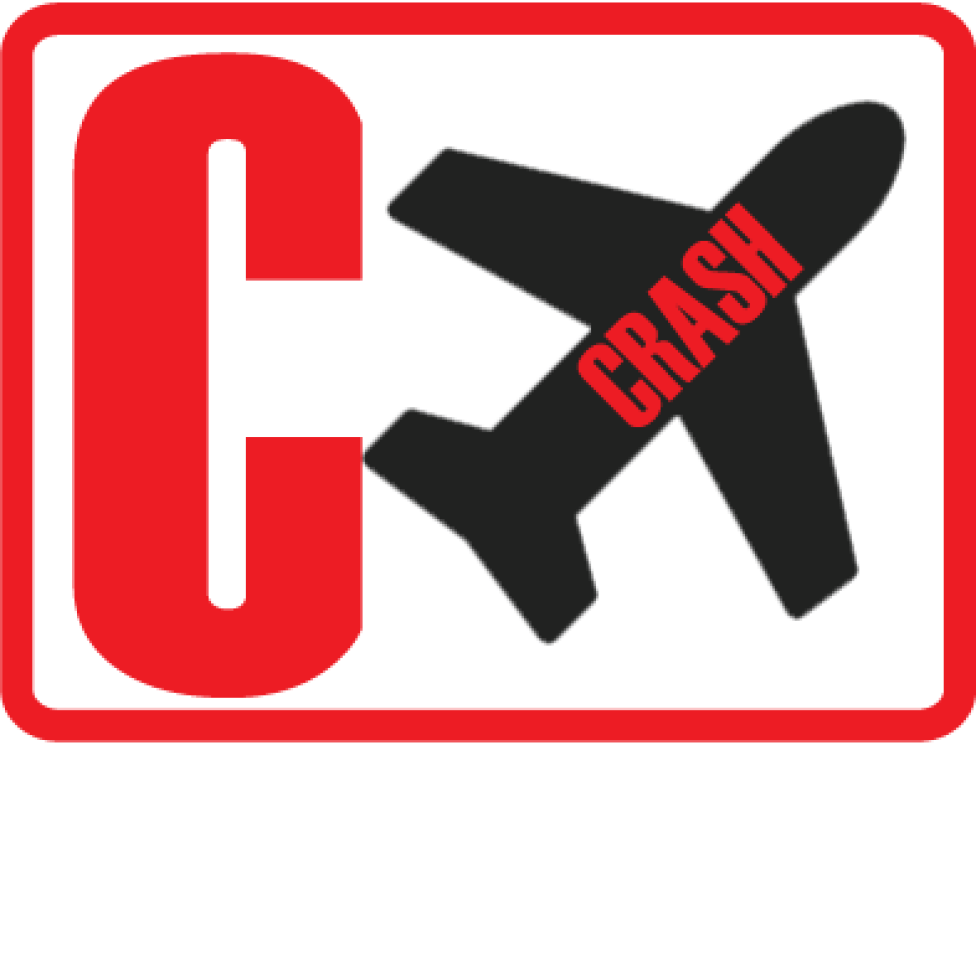
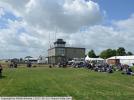
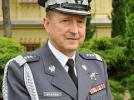
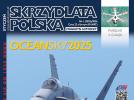
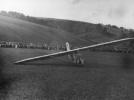
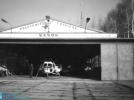









Komentarze